About the shipwreck of time. Josep Piera and FV Nogueroles
|
|
|
About the shipwreck of
time. Josep Piera and FV Nogueroles
From 21 October to 23 November 2008
Oberta Room, La Nau Cultural Centre,
Universitat de València
Opening hours: From Monday to Saturday From 10 h to 20 h.
Sunday: From 10 to 14 h |
|
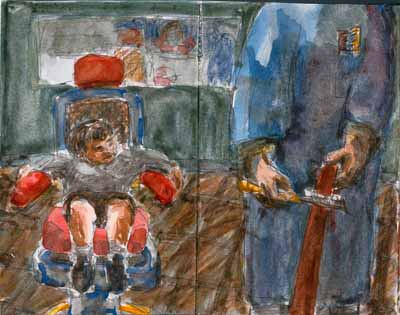 |
|
|
|
One of our essential tasks in university is to honour
people who have contributed to the knowledge of our
culture and language. The only enclosure where
everything seemed to be placidly normal, literature
lived years of silence and persecution. Since democratic
freedom was resumed, literature has filled spaces in
communication, aesthetics, and knowledge, like in any
other modern country. But there is still a long way to
go for literature to be perceived and received normally
and for writers to fight the invisibility they were
often pushed to.
Josep Piera (Beniopa, 1947) is a writer with dense,
plural and recognised works. As another poet said, he
works to leave words to us. Right from the start he was
determined, as a writer, to stand up for this normality,
despite the not always favourable conditions. It was
about time the poet and writer Josep Piera, whose
brilliant literary works stand out in our literature,
were paid public and collective homage. This exhibition
-About the shipwreck of time. FV Nogueroles reads
Josep Piera- is part of the tribute organised by
Universitat de València. |
|
|
|
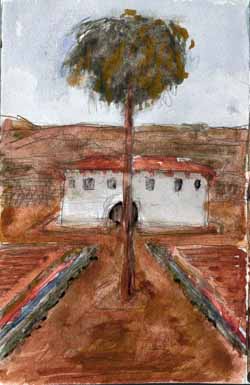 |
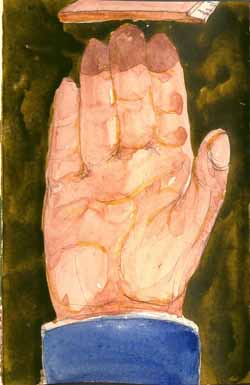 |
|
|
|
In a gesture of generosity, the artist FV Nogueroles (Gandia,
1965) has interpreted the works of Josep Piera in his
paintings. The outcome is the exhibition About the
shipwreck of time. FV Nogueroles reads Josep Piera,
shown to visitors for the first time at the Oberta Room
of La Nau, Universitat de València. His exemplary will,
dedication and artistic qualities will surely bring good
luck.
Josep Piera’s words have born splendid fruit through the
brushstrokes of Nogueroles. Indeed, this is a different
way of saving the debris, the remains, the shavings and
the feelings in the shipwreck of time. “One must
paint the way one is”, said Juan Gris; “One is but
oneself” says Piera. The exhibition is strongly original
because it shows two powerful interpreters of the
passing of time, memories being transformed into art
matter. |
|
|
|
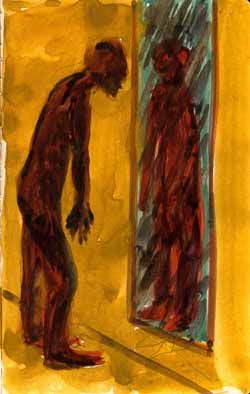 |
 |
|
|
|
Francesc Vicenç Nogueroles. Background
Francesc Vicenç Nogueroles i Peiró was born in Gandia in
1965. From a family working in the food industry, he
completed his primary and secondary education in his
town. He worked in the family business at the same time.
He started his degree in València, combining practical
work at the sculpture workshop of José Esteve Edo and
painting studies. He finished fine arts in Seville,
specialising in Conservation and Restoration.
A compulsive reader since he was young, he became
especially interested in painting. In spite of his not
too competitive nature, he won the first consolation
prize in the 3rd Nuevo Centro Scholarship
Contest València, 1986. The following year, after a
period of practical work in Guadalupe (Cáceres), he
moved to Seville to resume his restoration studies.
After finishing his degree, although he made his living
out of conservation and restoration work, private
commissions and, religious image interventions, in 1991
his principles caused him to resume an intensive
painting activity. He was selected by some national
competitions, such as the travelling exhibitions XXX
Salón Nacional de Pintura CAM - Fundación Cultural,
Comunitat Murciana, 1993, and the II Biennal de Pintura
Pascual Tomás, Comunitat Valenciana, 1993. In 1994 he
wins the ELCOGAS Award at the XLV Art Exhibition Ciudad
de Puertollano. He then participated in a number of
collective exhibitions such as «Fresca mirada», Claustre
de Sant Roc, Gandia, 1994 and 1995; «Entre el Cel i la
Terra», Banys Àrabs, Girona, 1998; 4th
Unicef Painting Exhibition, Sala Ibercaja, València,
1998; and «Codices Pacis», Art Galerie N, Munich, 2000.
He held his first individual exhibition at the end of
1994, at Palau, Terrateig, and the Auditorium of Palma
de Mallorca. In «Ca(u)sa abandonada. Objectes», Oliva,
1998, he questioned the treatement of art pieces as
objects. His first non-exhibition -which condemns the
possible role of artists as celebrities- was also held
at the Palau, Terrateig, 2001. |
|
|
|
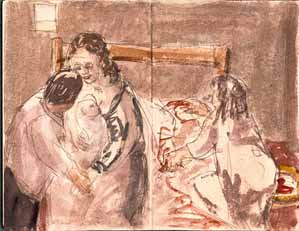 |
 |
|
|
|
His passion for literature and his creation of works
based on texts are constant in throughout his career.
Three painting types can be differentiated in his works:
one inspired in Mediterranean cultures, one based on
books about real or fictitious figures, and one with a
more introspective, intimate world. Signes de la
Mediterrània stands out from the first group.
In the second one, we must mention some of his works
presented in collective exhibitions like «Arts
plàstiques a la Safor. VIè Centenari d’Ausiàs March»,
Beniarjó, 1997, «Homenatge a Joan M. Monjo», Gandia,
2007, in the individual exhibition El petit príncep,
Llotja del Tint, Banyoles, 1997, and a series
underway since 1999: Fahrenheit 451.
In the third group, Quaderns del Molí, Sala
Expocambra, Girona, 2000; and the landscapes and
seascapes of l’Empordà, 2002 are noteworthy.
To understand his personal evolution, it is worth noting
that he left the Safor county in 1996 and moved to
Cambrils, Alp and Figueres, where he lived since 1998.
In 2001, although he kept his studio in Figueres he
moved to Barcelona. Commuting by train to his studio
allows him to fill his notebooks with images suggested
by books like Fahrenheit 451 or El Vaixell de
Genseric. A genuine traveller, cities like Florence,
London or Rome and his visits to the MNAC of Barcelona
help him learn more about the classics and their
treatment of images and colours.
His enthusiasm for painting is paralleled by his
interest in reading. From Barcelona he follows authors
like Josep Piera, who writes from La Safor. This is the
thread to Puta postguerra, Barcelona, 2007, by
Piera, a book on which FV Nogueroles has been working
recently. |
|
|
|
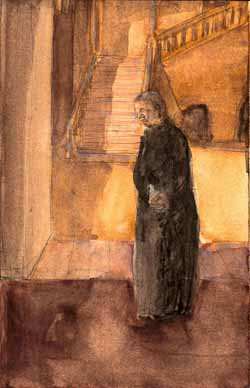 |
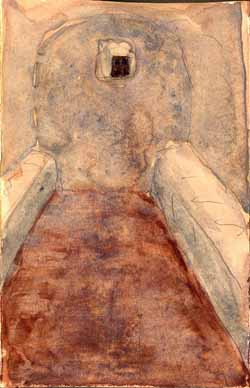 |
|
|
|
Josep Piera’s background
Josep Piera i Rubio was born in 1947 in
Beniopa (today one of Gandia’s quarters). From a family
of greengrocers, he completed his primary education at
the religious school of the Escolàpies of Gandia and his
secondary studies at the Escolapis, also in the same
town. After working with his father for some time, he
did his military service in Valladolid and Majorca.
Living both in València and Gandia, he completed a
teaching degree.
He was already interested in literature
as a young man, especially in poetry. He started to
publish his works in Spanish. Áve Fénix, Malaga,
1971, and Qasida, València, 1972. Natanael
earns him the Award Ausiàs March of Gandia in 1973.
He started writing in Valencian as from
that moment, publishing the poetry collection Renou:
la pluja ascla els estels: Renou, València, which
gave way to a long list of titles, among which we find
El somriure de l’herba, Barcelona, 1980 (Carles
Riba Award, 1979), and the compilation Dictats
d’amors (poesia 1971-1991), Barcelona, 1991. His
research on Valencian poetry leads to the production of
a number of anthologies of Arabic-Valencian poets, and
the essay El paradís de les paraules, Barcelona,
1995 (Josep Vallverdú Award 1994), his crowning
achievement in this period.
Piera has also written prose. Although he
began by writing a novel Rondalla del retorn,
València, 1978 (Andròmina Award 1977), his narrative
works can be divided into three groups: travelling in
the Mediterranean, literary biographies of our most
relevant figures, and autobiography. Some works from the
first group are outstanding: El Cingle Verd,
Barcelona, 1981 (Josep Pla Award 1981); Estiu grec,
Barcelona, 1985; Un bellíssim cadàver barroc,
Barcelona, 1987 (Sant Joan Award 1996); and
Seduccions de Marràqueix, Barcelona, 1996. |
|
|
|
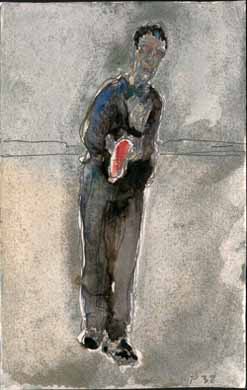 |
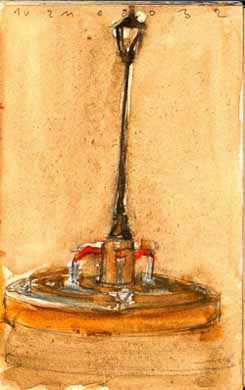 |
|
|
|
In the second group, we must note Jo
sóc aquest que em dic Ausiàs March (biography),
Barcelona, 2001, and the biography of Saint Francis
Borgia (forthcoming). And in the third group, we cannot
forget El temps feliç, Barcelona, 2001; Puta
postguerra, Barcelona, 2007; and the next volume,
currently being written.
Coming back to his biography, in 1974 he
marries Marifé Arroyo, «the teacher», and they move to
their own paradise in Drova. Piera works as a teacher
for a few years but he finally gives up his teaching
post to work as a professional writer. An intermittent
but constant traveller, he travels the Mediterranean and
makes Barcelona his literary capital.
In academic year 1985-1986 he worked as a
language assistant in the Catalan Language and
Literature Department of the Instituto Universitario
Orientale of Naples. He was later appointed Director of
The Year of Tirant (1989-1991) at the Council of
Gandia and Literary Director of the publishing house
Tres i Quatre (1991-1993).
His works have been translated into
different European languages like Spanish, Italian,
English... He was decorated with the Creu de Sant Jordi
of the Catalonian Regional Government, Barcelona, 1991.
In 2005 he was appointed member of the Philological
Section of the Institut d’Estudis Catalans. |
|
|
|
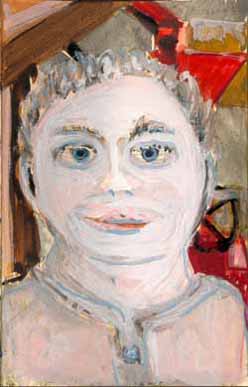 |
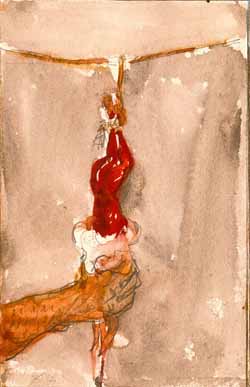 |
|
|
|
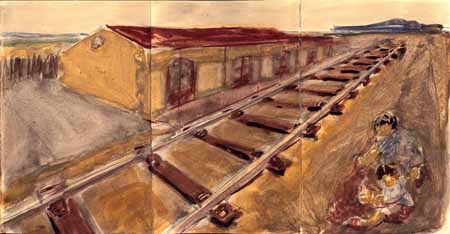 |
|
|
|
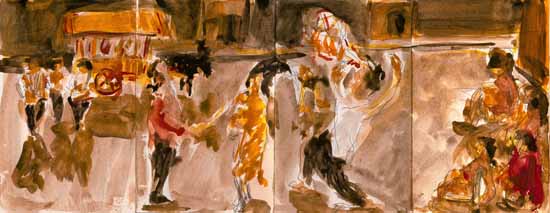 |
|
|
|
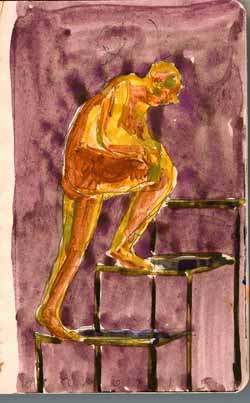 |
|
|
|
|